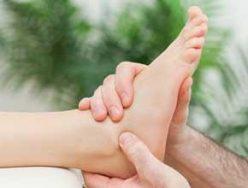Assessing and Correcting Foot and Ankle Problems
Foot and ankle pain is a prevalent problem that fitness professionals encounter frequently when working with clients. This article illustrates the anatomy of the major structures of the foot and ankle, explains the most common musculoskeletal imbalances of these areas, teaches trainers how to assess a client’s feet and ankles, and provides four corrective exercise techniques that can be used to eliminate pain and improve function.
ABOUT THE FEET AND ANKLES
The feet and ankles are key parts of the body that act as shock absorbers when a person interacts with a contact surface such as the ground. They also help the body adapt to varied surfaces via side-to-side movement. Understanding the anatomy of these important body parts can help you know how to assess them for imbalances.

















